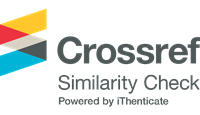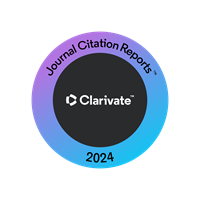Influence of different post-emergence application times of chlorimuron-ethyl, fomesafen and bentazon herbicides on the control of <em>Commelina benghalensis</em> L
Abstract
The aim of this research was to study the influence of different application times on the uptake and efficiency of chlorimuron-ethyl, fomesafen and bentazon herbicides. The experiment was carried out at Universidade Estadual de Maringá to evaluate the most appropriate conditions of temperature, relative humidity and light to control Commelina benghalensis L., by applying the herbicides at ten different times of the day. Weed control was evaluated at 7, 14 and 21 days after application (DAA). The results indicated that at 7 DAA chlorimuron-ethyl provided lower control at the intervals from, 11:30p.m. to 5:30 a.m. and from 11:30p.m. to 5:30p.m. At 14 DAA and onwards the product showed satisfactory results for all times of application. As for fomesafen and bentazon, at 7 DAA, the times of minimum control were 11:30 a.m. and 5:30 p.m. Therefore, in order to reach maximum control of Commelina benghalensis L., the hours of the day when temperature and relative humidity are lower than 18ºC and 50% should be avoided.Downloads
Download data is not yet available.
Published
2008-07-14
How to Cite
Ramirez, A. C., Constantin, J., Marchiori Junior, O., Maciel, C. D. de G., Oliveira Junior, R. S. de, & Apoloni, D. K. M. (2008). Influence of different post-emergence application times of chlorimuron-ethyl, fomesafen and bentazon herbicides on the control of <em>Commelina benghalensis</em> L. Acta Scientiarum. Agronomy, 21, 467-472. https://doi.org/10.4025/actasciagron.v21i0.4258
Issue
Section
Agronomy
DECLARATION OF ORIGINALITY AND COPYRIGHTS
I Declare that current article is original and has not been submitted for publication, in part or in whole, to any other national or international journal.
The copyrights belong exclusively to the authors. Published content is licensed under Creative Commons Attribution 4.0 (CC BY 4.0) guidelines, which allows sharing (copy and distribution of the material in any medium or format) and adaptation (remix, transform, and build upon the material) for any purpose, even commercially, under the terms of attribution.
2.0
2019CiteScore
60th percentile
Powered by 

2.0
2019CiteScore
60th percentile
Powered by 



















































